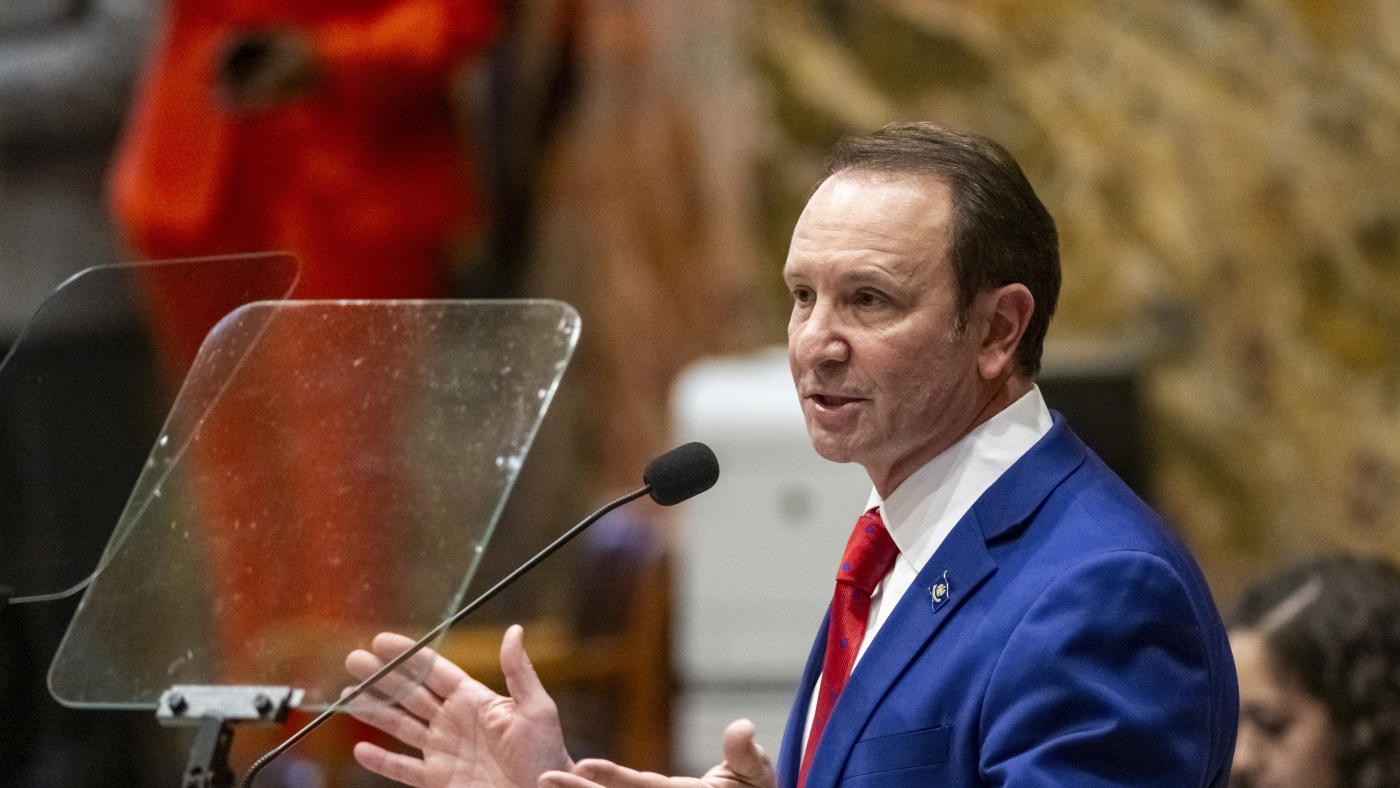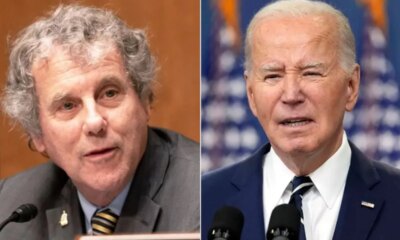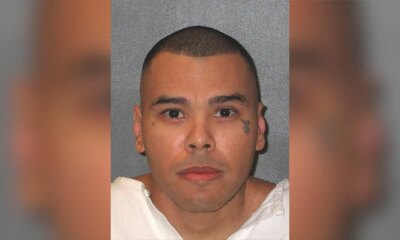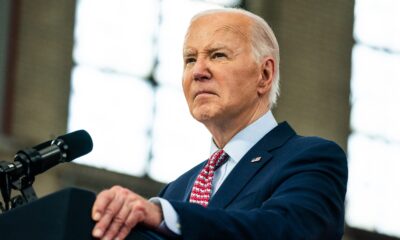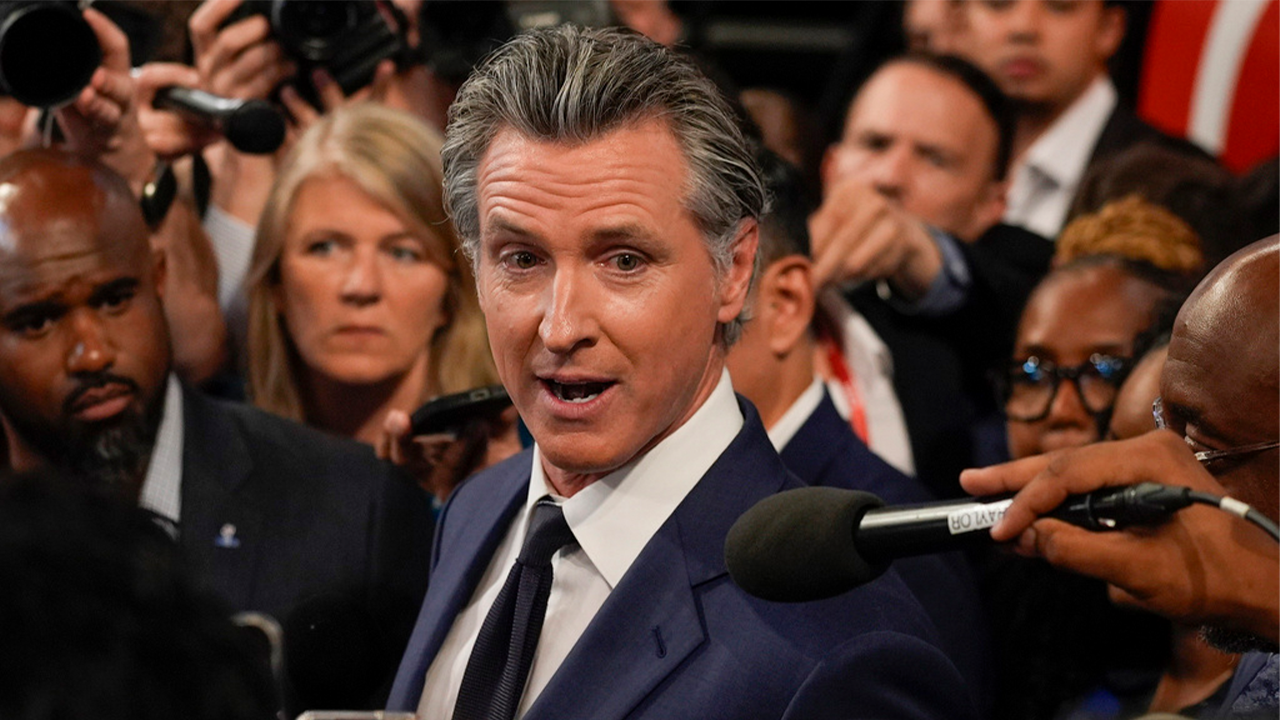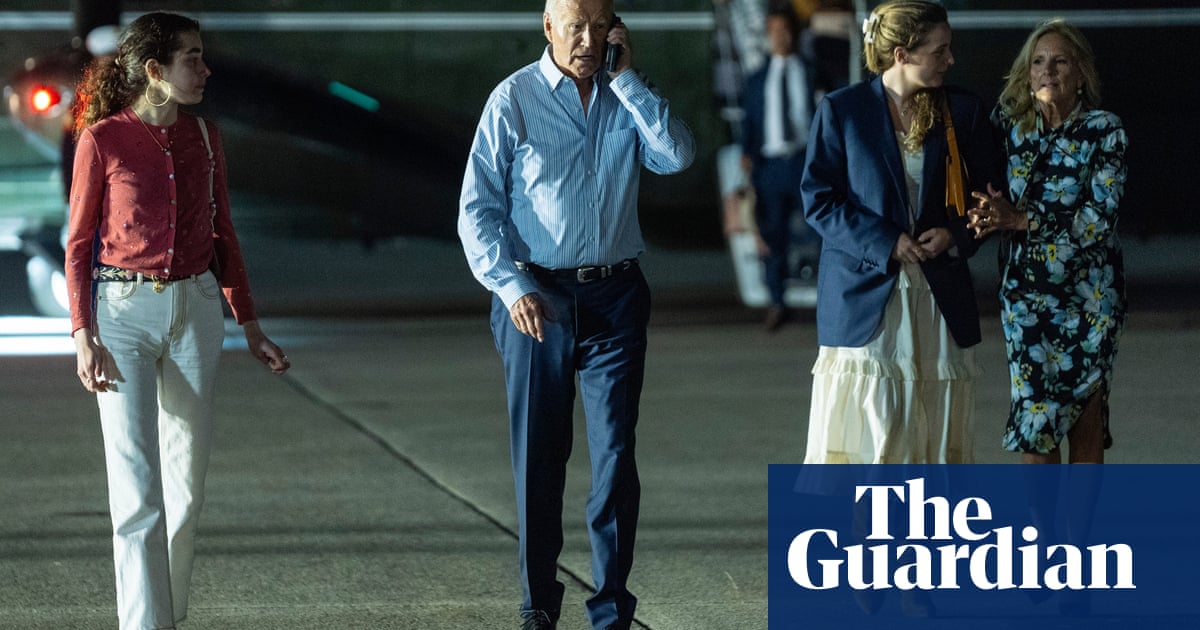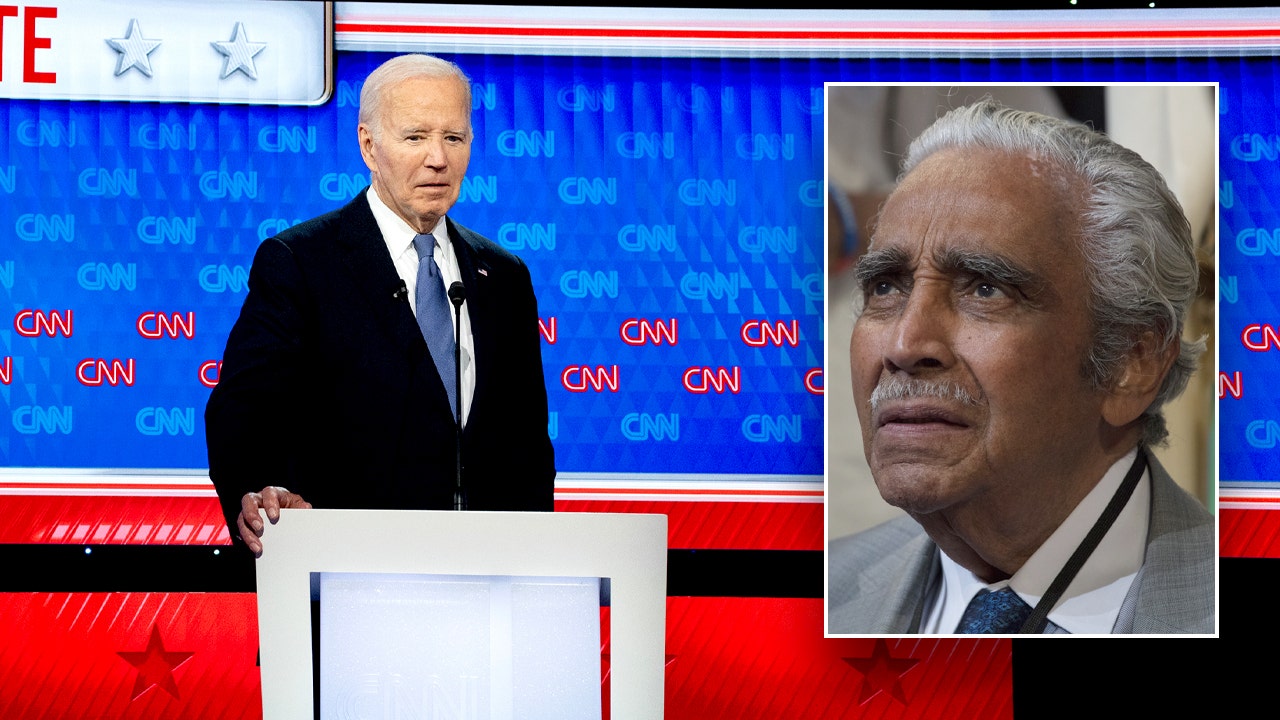New York
Man Who Sold Michael K. Williams Drugs That Killed Him Is Sentenced

A man who sold a fatal dose of fentanyl-laced heroin to Michael K. Williams, the actor who rose to fame for his portrayal of a stickup man named Omar Little on the HBO series “The Wire,” was sentenced on Friday to 10 years in prison.
The man, Irvin Cartagena, was one of four men who were charged with running a drug trafficking operation out of an apartment building in the Williamsburg section of Brooklyn; all four pleaded guilty.
But it was Mr. Cartagena who sold Mr. Williams the drugs that killed him on Sept. 5, 2021. Mr. Williams, 54, met the men in front of the apartment building that day and Mr. Cartagena handed him the drugs, prosecutors said. Mr. Williams returned to his own apartment nearby and was found dead the following day. His death was ruled an accidental drug overdose weeks later.
On Friday, Mr. Cartagena, now 40, was led into the Federal District Court at 40 Centre Street dressed in a khaki jumpsuit, with his legs shackled together and his arms chained to his waist. Speaking through a Spanish interpreter, Mr. Cartagena apologized for his role in Mr. Williams’s death.
“I am very sorry for my actions,” he said. “When we sold the drugs, we never intended for anyone to lose their life.”
In announcing her sentence, Judge Ronnie Abrams acknowledged that it could have been any of the other three men charged along with Mr. Cartagena who handed Mr. Williams the fatal drugs. However, she said, Mr. Cartagena knew the heroin was laced with fentanyl when he sold it, while Mr. Williams was unaware.
The harm from that sale was “very clear and very tragic,” she said.
The length of the sentence, she added, is intended to serve as a deterrent to both Mr. Cartagena, who has been convicted of drug charges in the past, and to others who sell fentanyl, which has led to many deaths across the country in recent years.
“It’s got to stop,” she said.
Mr. Cartagena, who is also known as “Green Eyes,” was first introduced to heroin when he was about 13 years old and living in Puerto Rico, where he grew up, his lawyer, Sean M. Maher, said in court. He was struggling with school and spending more and more time on the streets in order to avoid a tumultuous and violent family life, Mr. Maher said.
He quickly became hooked on the drug, and from then on his addiction grew “almost unabated,” according to court documents filed before the sentencing hearing.
In the filing, Mr. Maher argued that the men who sold Mr. Williams the drugs were not “cartel leaders, gang members or even bosses.” Rather, they were at the “absolute bottom of the rung in the narcotics trade,” he wrote.
The filing noted that Mr. Cartagena’s bosses paid him in heroin to “salve his own personal addiction,” as well as a few dollars per bag sold.
Prosecutors said Mr. Cartagena and the other men continued to sell fentanyl-laced heroin even after Mr. Williams’s death. A confidential informant and undercover officers bought drugs from the ring more than a dozen times.
One of Mr. Cartagena’s co-defendants, Carlos Macci, was sentenced last month to 30 months in prison. The other two men await sentencing hearings next month.
In the weeks before Mr. Macci’s sentencing, the judge received a letter from David Simon, a friend of Mr. Williams and the co-creator of “The Wire,” who asked the judge for leniency and to sentence Mr. Macci to time served, which would amount to about one and a half years.
Mr. Simon told the court that Mr. Williams saw his drug addiction as his own responsibility.
“I know that Michael would look upon the undone and desolate life of Mr. Macci and know two things with certainty: first, that it was Michael who bears the fuller responsibility for what happened,” Mr. Simon wrote.
And second, he said: “No possible good can come from incarcerating a 71-year-old soul, largely illiterate, who has himself struggled with a lifetime of addiction.”
Throughout the hearing on Friday, Mr. Cartagena listened intently to the proceedings through headphones. He nodded along and wiped his eyes as his attorney outlined his difficult childhood and his lifelong struggle with addiction.
But Mr. Cartagena cast his eyes down when Mr. Williams’s nephew, Dominic Dupont, took his place at a lectern to speak about his uncle’s impact on his family and his community, as well as the effects of his death.
“He was an individual that would take dirt and try to make diamonds out of it,” Mr. Dupont said. “That was his superpower.”
Mr. Dupont then directly addressed Mr. Cartagena, who looked up, and urged him to think about the legacy he wanted to leave behind for himself and for his family.
“I am looking at you because I understand that your grandmother and the people who care about you want better for you,” he told him.
After the hearing, Mr. Dupont said the sentence imposed would not bring Mr. Williams back and that communities were still “suffering” because of fentanyl.
His hope, he said, was that his uncle’s death, “as unfortunate as it was,” would be an opportunity to save lives.

New York
Transcript of Trump Manhattan Trial, May 30, 2024

-
Jury Deliberation Re-charge
SUPREME COURT OF THE STATE OF NEW YORK
COUNTY OF NEW YORK CRIMINAL TERM
-
-
PART: 59
Χ
THE PEOPLE OF THE STATE OF NEW YORK,
-against-
DONALD J. TRUMP,
DEFENDANT.
BEFORE:
Indict. No.
71543-2023
CHARGE
4909
FALSIFYING BUSINESS
RECORDS 1ST DEGREE
JURY TRIAL
100 Centre Street
New York, New York 10013
May 30, 2024
HONORABLE JUAN M. MERCHAN
JUSTICE OF THE SUPREME COURT
APPEARANCES:
FOR THE PEOPLE:
ALVIN BRAGG, JR., ESQ.
DISTRICT ATTORNEY, NEW YORK COUNTY
One Hogan Place
New York, New York 10013
BY:
JOSHUA STEINGLASS, ESQ.
MATTHEW COLANGELO,
ESQ.
SUSAN HOFFINGER, ESQ.
CHRISTOPHER CONROY, ESQ.
BECKY MANGOLD, ESQ.
KATHERINE ELLIS, ESQ.
Assistant District Attorneys
BLANCHE LAW
BY:
TODD BLANCHE, ESQ.
EMIL BOVE, ESQ.
KENDRA WHARTON, ESQ.
NECHELES LAW, LLP
BY: SUSAN NECHELES, ESQ.
GEDALIA STERN, ESQ.
Attorneys for the Defendant
SUSAN PEARCE-BATES, RPR, CSR, RSA
Principal Court Reporter
LAURIE EISENBERG, RPR, CSR
LISA KRAMSKY
THERESA MAGNICCARI
Senior Court Reporters
Susan Pearce-Bates, RPR, CCR, RSA
Principal Court Reporter
New York
Transcript of Trump Manhattan Trial, May 29, 2024

SUPREME COURT OF THE STATE OF NEW YORK
COUNTY OF NEW YORK CRIMINAL TERM
-
THE PEOPLE OF THE STATE OF NEW YORK,
PART: 59
Indict. No.
71543-2023
CHARGE
-against-
DONALD J. TRUMP,
DEFENDANT.
BEFORE:
4815
FALSIFYING BUSINESS
RECORDS 1ST DEGREE
JURY TRIAL
X
100 Centre Street
New York, New York 10013
May 29, 2024
HONORABLE JUAN M. MERCHAN
JUSTICE OF THE SUPREME COURT
APPEARANCES:
FOR THE
PEOPLE:
ALVIN BRAGG, JR.,
ESQ.
DISTRICT ATTORNEY, NEW YORK COUNTY
One Hogan Place
New York, New York 10013
BY:
JOSHUA STEINGLASS, ESQ.
MATTHEW COLANGELO,
ESQ.
SUSAN HOFFINGER, ESQ.
CHRISTOPHER CONROY, ESQ.
BECKY MANGOLD, ESQ.
KATHERINE ELLIS, ESQ.
Assistant District Attorneys
BLANCHE LAW
BY:
TODD BLANCHE, ESQ.
EMIL BOVE, ESQ.
KENDRA WHARTON, ESQ.
NECHELES LAW, LLP
BY: SUSAN NECHELES, ESQ.
Attorneys for the Defendant
SUSAN PEARCE-BATES, RPR, CSR, RSA
Principal Court Reporter
LAURIE EISENBERG, RPR, CSR
LISA KRAMSKY
THERESA MAGNICCARI
Senior Court Reporters
Susan Pearce-Bates,
RPR, CCR, RSA
Principal Court Reporter
New York
Critics Fault ‘Aggressive’ N.Y.P.D. Response to Pro-Palestinian Rally

Violent confrontations at a pro-Palestinian rally in Bay Ridge, Brooklyn, on Saturday reflected what some local officials and protest organizers called an unexpectedly aggressive Police Department response, with officers flooding the neighborhood and using force against protesters.
At the rally, which drew hundreds of demonstrators, at least two officers wearing the white shirts of commanders were filmed punching three protesters who were prone in the middle of a crosswalk. One officer had pinned a man to the ground and repeatedly punched him in the ribs, a 50-second video clip shows. Another officer punched the left side of a man’s face as he held his head to the asphalt.
The police arrested around 40 people who were “unlawfully blocking roadways,” Kaz Daughtry, the department’s deputy commissioner of operations, said on social media on Sunday.
Mr. Daughtry shared drone footage of one person who climbed on a city bus, “putting himself and others in danger.” The Police Department, he wrote, “proudly protects everyone’s right to protest, but lawlessness will never be tolerated.”
Neither Mr. Daughtry nor the police commented on the use of force by officers. A spokeswoman for Mayor Eric Adams did not immediately respond to a request for comment about the police response. The Police Department’s patrol guide states that officers must use “only the reasonable force necessary to gain control or custody of a subject.”
Bay Ridge has a significant Arab American population and hosts demonstrations in mid-May every year to commemorate what Palestinians call the Nakba, or “catastrophe” — when hundreds of thousands of Palestinians fled or were forced from their homes during the war that led to Israel’s founding in 1948.
Andrew Gounardes, a state senator and a Democrat who represents the area, said local politicians had been in touch with the commanding officer of the 68th police precinct before the preplanned protest and said there had been no indication that there would be such a heavy police response. He called the videos he saw of the events “deeply concerning.”
“It certainly seems like the police came ready for a much more aggressive and a much more confrontational demonstration than perhaps they had gotten,” he added.
Justin Brannan, a Democrat who is the city councilman for the area, said the protest was smaller than last year’s but that officers had come from all over the city to police it. He said their approach appeared to be directed by 1 Police Plaza, the department headquarters in Manhattan.
“These were not our local cops. Clearly, there was a zero-tolerance edict sent down from 1PP, which escalated everything and made it worse,” Mr. Brannan said.
“I’m still waiting on information and details about the arrests that were made,” he added, “but from my vantage point, the response appeared pre-emptive, retaliatory and cumulatively aggressive.”
The Republican state assemblyman whose district includes parts of Bay Ridge, Alec Brook-Krasny, had a different perspective. He said an investigation would determine whether the officers’ actions were warranted, but he said some protesters were “breaking the law” by refusing to clear the street.
“I think that those bad apples are really hurting the ability of the other people to express their opinions,” Mr. Brook-Krasny said.
Some local residents supported the police and said they were tired of the protests’ disruptive impact. “Enough is enough,” said Peter Cheris, 52, a 40-year resident of Bay Ridge, who said he had viewed the videos of the protest. “If you’re going to break the law, you deserve it,” he said.
Donna Lieberman, the executive director of the New York Civil Liberties Union, singled out the presence of the Police Department’s Strategic Response Group, a unit that is sometimes deployed to protests and has been the subject of several lawsuits brought by the civil liberties union and other groups.
The police unit’s handling of the demonstration “was a violation of New Yorkers’ right to speak out and risks chilling political expression,” Ms. Lieberman said in a statement. “N.Y.C.L.U. protest monitors witnessed violent arrests, protester injuries, and even arrests of credentialed members of the press.”
She added: “The continual pattern of N.Y.P.D. aggression against pro-Palestine demonstrators raises important questions about the city’s disparate treatment of speakers based on their message.”
Abdullah Akl, an organizer with Within Our Lifetime, the pro-Palestinian group that organized the protests, said the response took organizers aback, particularly for a demonstration that occurs every year in Bay Ridge and is known to be frequented by families with children.
“It was really an unusual and unprecedented response,” Mr. Akl said.
He said he witnessed two men being pushed to the ground. One of them can be seen in a video with blood streaming down the side of his face. Nerdeen Kiswani, chair of Within Our Lifetime, said three protesters — including the two who can be seen being punched — were treated for their injuries at hospitals.
The Police Department has arrested hundreds of demonstrators since street protests began shortly after the Hamas attack on Israel on Oct. 7 and Israel’s subsequent invasion of Gaza. The protests have been largely peaceful, with few injuries or violent clashes.
In a turning point, on April 30 officers cleared Hamilton Hall at Columbia University, which had been occupied by protesters for 17 hours. Many officers showed restraint during the arrests, though a handful were filmed pushing and dragging students as they removed them from the building.
On Sunday, Ms. Lieberman said police response to the protests in Bay Ridge underscored the importance of implementing the terms of a $512,000 settlement the civil liberties union and the Legal Aid Society reached with the city this month. The settlement set new terms for how the Police Department manages protests, creating a tiered system that dictates how many officers can be sent to demonstrations and limits the use of the Strategic Response Group. It will take years to put into practice.
The settlement is one of several that stemmed from the George Floyd racial justice protests in 2020. Last year, the city agreed to pay $13.7 million to settle a class-action lawsuit that claimed unlawful police tactics had violated the rights of demonstrators in Manhattan and Brooklyn. In March, the city agreed to pay $21,500 to each of roughly 300 people who attended another Black Lives Matter protest in 2020 in the Bronx. Those people were penned in by the police, then charged at or beaten with batons, according to a legal settlement.
Andy Newman and Camille Baker contributed reporting.
-

 News1 week ago
News1 week agoTracking a Single Day at the National Domestic Violence Hotline
-

 World1 week ago
World1 week agoIsrael accepts bilateral meeting with EU, but with conditions
-

 News1 week ago
News1 week agoA Florida family is suing NASA after a piece of space debris crashed through their home
-

 World1 week ago
World1 week agoIs Israel’s Smotrich fulfilling his dream of annexing the West Bank?
-

 News1 week ago
News1 week agoSupreme Court upholds law barring domestic abusers from owning guns in major Second Amendment ruling | CNN Politics
-

 Politics1 week ago
Politics1 week agoSupreme Court upholds federal gun ban for those under domestic violence restraining orders
-

 World1 week ago
World1 week agoNew Caledonia independence activists sent to France for detention
-

 World1 week ago
World1 week agoIsrael will be the ‘ultimate loser’ in war with Hezbollah, Iran says
